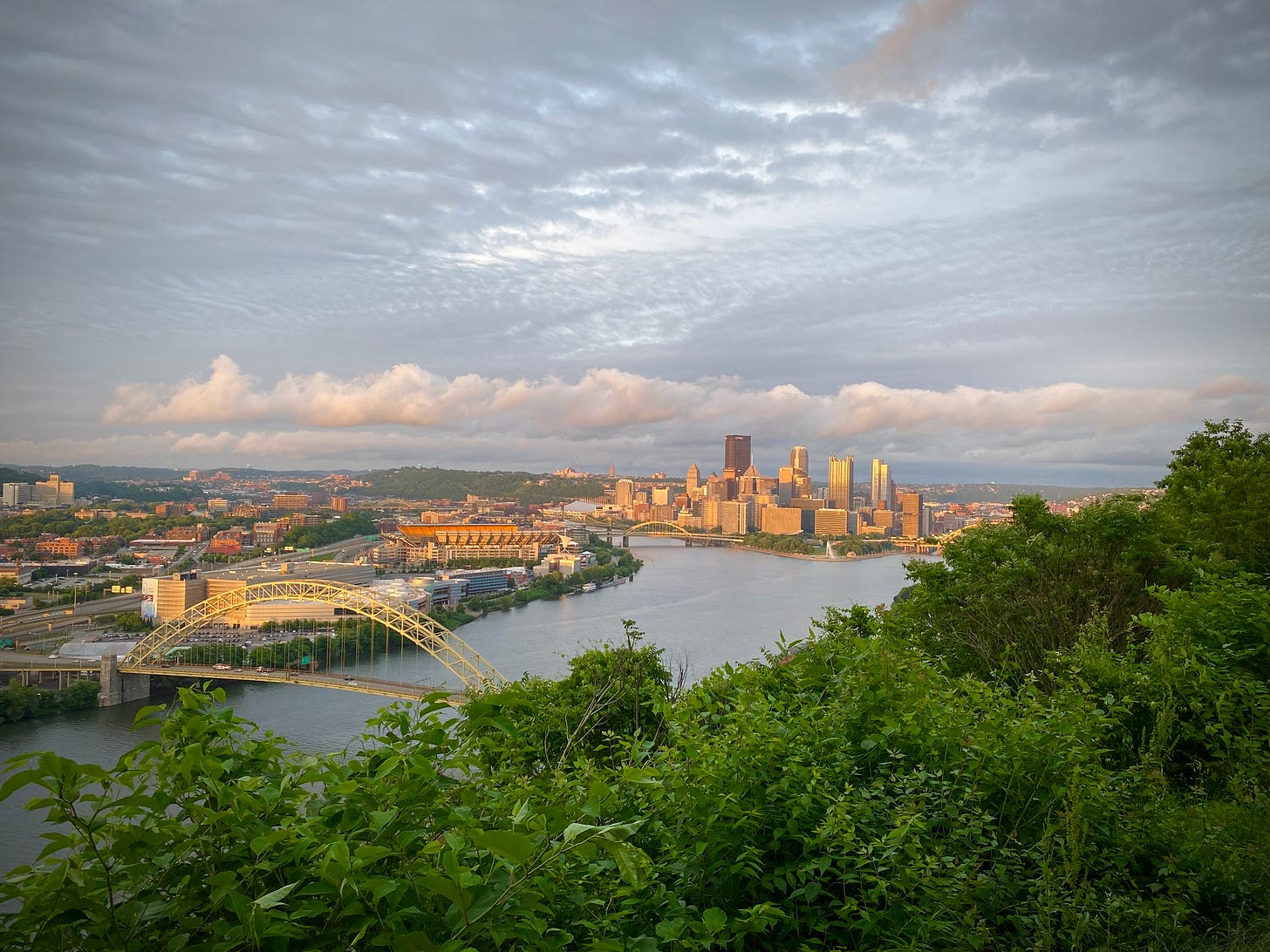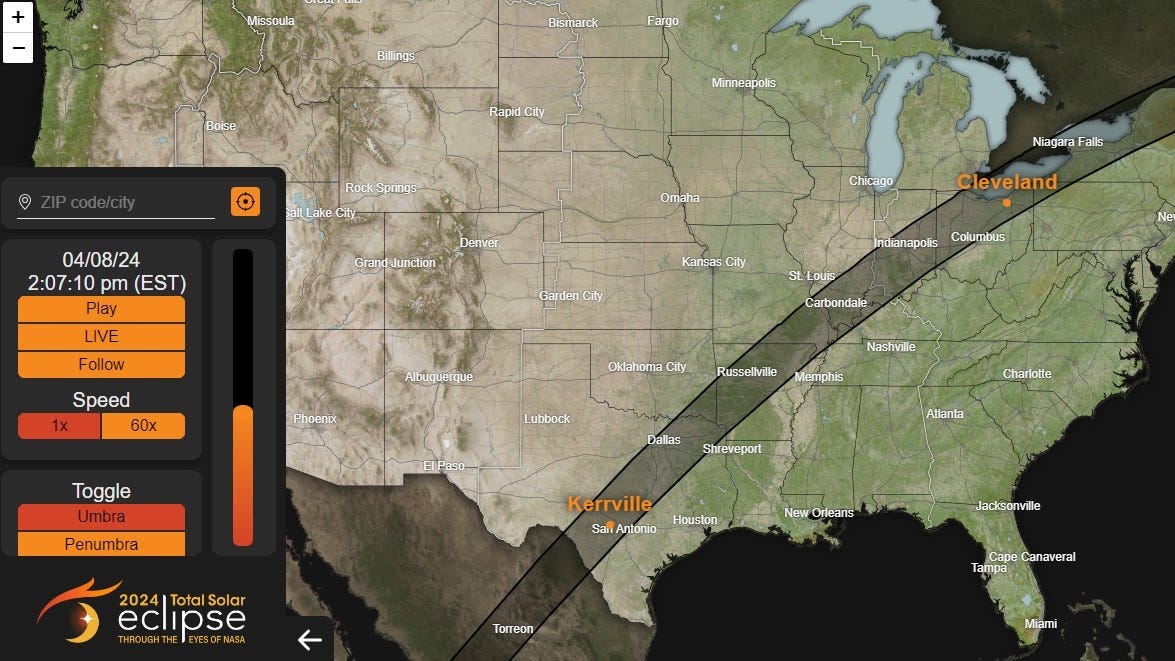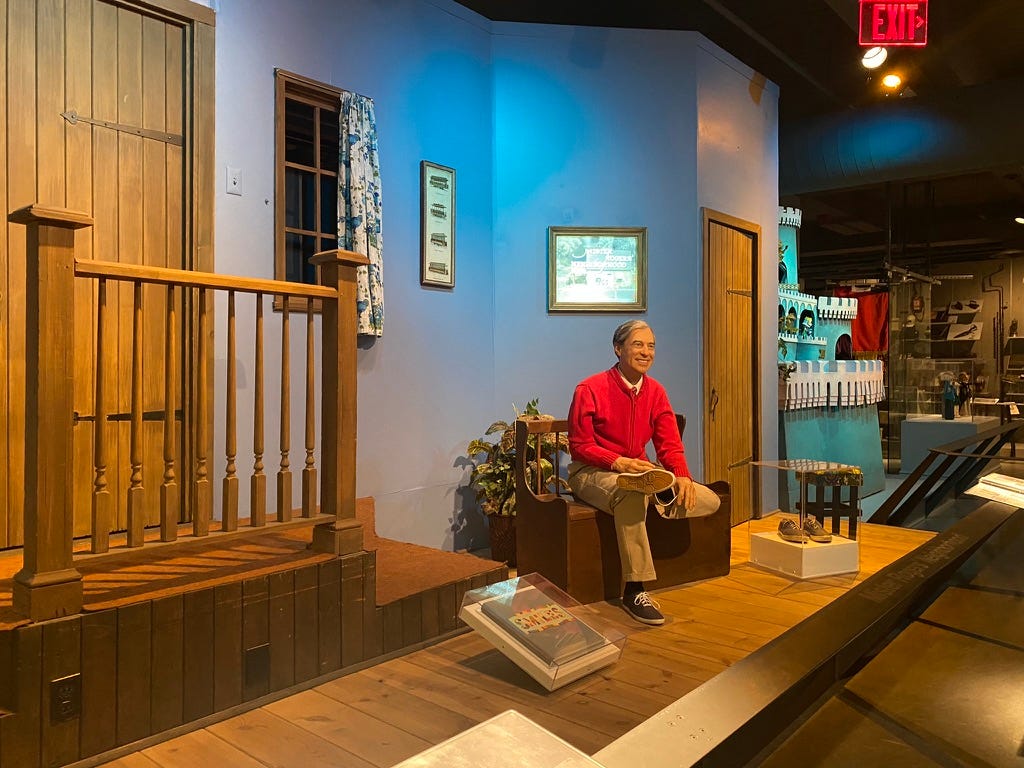March '24 Trivia Time!
We're focused on Pittsburgh
I heard from lots of folks about the last newsletter, “When Virginia Claimed Pittsburgh,” who were shocked by the power and rivalry of colonial governors. Heads up: to succeed in this month’s Ohio River Trivia quiz, you need to read it first. This month’s trivia is focused on Pittsburgh with a little Philly and Pennsylvania sprinkled in for flavor.
Okay, as a reminder, the answers are in the footnotes. Good luck!

QUESTIONS
Which of these nicknames is/has been used for Pittsburgh?1
City of Bridges
The ‘Burgh
The Paris of Appalachia
All the above
Only a. and b.
“Hell with the Lid Off” refers to:2
A book of that title exploring the ferocious five-year battle between Pittsburgh and Oakland for NFL supremacy during the turbulent seventies
Pittsburgh’s thick smog (coal smoke plus fog)
After a decade as a republic under Oliver Cromwell, England “restored” the monarchy under King Charles II in 1660. The restored king settled a large loan with William Penn's father (also named William) by granting him a “restoration colony” of roughly 40,000 square miles of land west and south of New Jersey, Pennsylvania. Which two of the following are also restoration colonies?3
New York
New Jersey
The “Lower Counties” of Delaware (New Castle, Sussex, and Kent)
South Carolina
The British colony of Virginia fought Lord Dunmore’s War on two fronts. First was against the Shawnee and Mingo people of the Ohio Valley. Second was with another colony. Name that colony.4
In what year was Pittsburgh finally established as being in Pennsylvania, not Virginia?5
1768, when the Mason-Dixon survey was completed
1779, when Pennsylvania and Virginia agreed to extend the original Mason-Dixon line westward to a point five degrees from the Delaware river
In 1783, when Britain formally recognized the independence of the United States in the Treaties of Paris
When Pennsylvania’s Act for Gradual Abolition of Slavery was signed in 1780, were there more enslaved workers in Philadelphia or Pittsburgh?6
One of the most-photographed scenes in Pittsburgh is the Duquesne Incline on Mt. Washington. The first Pittsburgh funicular was the Ormsby Mine Gravity Plane, built in 1844. In the course of The ‘Burgh’s industrial history, how many inclines were in service?7
11
22
23
Which of these foodie stories about Pittsburgh is true?8
The Big Mac was invented there in 1967 by a McDonald’s franchisee
The Klondike Bar was invented there in 1929
To make any salad a “Pittsburgh Salad,” simply add french fries on top
Chipped ham was invented by the same restaurant that invented the Klondike Bar
All the above
Which of these is NOT a Pittsburgh first?9
First PBS station
First Ferris Wheel
First Ice Capades
First nighttime World Series Game
First American hospital
This Pittsburgh native graduated from Pittsburgh Theological Seminary in 1962 and attended Pitt’s Graduate School of Child Development before going on to be a broadcaster in children's television. This TV personality is recognized by more than forty honorary degrees and several awards, including a Lifetime Achievement Emmy in 1997 and the Presidential Medal of Freedom in 2002. Who is this native Pittsburgher?10
Intermission Message
I always put a little intermission between the questions and answers to keep you from inadvertently seeing the answers before you’re ready. With vacation season straight ahead, I’ve included two posts from my other newsletter. I hope you’ll enjoy them.


The April 8 solar eclipse will be visible throughout most of the Ohio River Valley. NASA will livestream it. Here’s the official website with cool details and interactive features.
ANSWERS
All the above. Other cities that call themselves a variation of “The ‘Burgh” tend to spell it Burg (no h).
Both! Here’s a link to the book, and here’s a link to a fascinating article in the Daily Mail (UK) with pictures of Pittsburgh’s smog.
New York and New Jersey are the only two correctly formed answers (a. and b.). Option c. is incorrect because the Duke of York granted William Penn the lower counties of Delaware, not the sovereign. Option d. is a trick question because there was no North or South Carolina when the Carolina grant was made to the eight Lords Proprietors in 1663.
This was a freebie: Pennsylvania. According to the Heinz History Center: Royal Governor of Virginia John Murray, Fourth Earl of Dunmore, commissioned Dr. John Connolly to seize control of Pittsburgh. In January 1774, Connolly occupied the abandoned Fort Pitt and renamed it Fort Dunmore. He also ordered the forming of a militia to enforce Virginia law. He was shortly thereafter arrested and jailed at Hannah’s Town, Westmoreland County. He was released until his trial in April, and when he returned with 200 militia men, he forcible seized control of Pittsburgh in accordance with Virginia’s charter and for the safety of the frontier.
1779 (b).
Pittsburgh. This shocked me because it was such a frontier town at the time. Imagine my surprise at the Fort Pitt Museum, where a placard reads:
…The presence of slavery in Pennsylvania was well-known. West of the mountains, the ratio may have been as high as one slave to every 87 residents, much higher than in the region surrounding Philadelphia. Here, as in the South, an industry characterized by back-breaking labor, in this case the fur trade, ruled all others. Large numbers of deer skins—150,000 per year at the industry’s peak—were brought to Fort Pitt by native hunters. Many had been partially processed by the hunters themselves, but the work of fleshing, dehairing, removing maggots (a practice known as “worming”), and packing for shipment consumed many traders’ days. Though we have no record of their employment in it, such grueling work was often the province of those held against their will.
Read the full text of An Act for the Gradual Elimination of Slavery here. If Pittsburgh had gone to Virginia, slavery have been legal in that city until the Emancipation Proclamation in 1863.
According to Pittsburgh Magazine, a total of 22. They were used to haul coal, freight, and workers.
All are true!
e. Philadelphia is home to the first American hospital, established in 1751 by Benjamin Franklin and Dr. Thomas Bond. The original Pine Building also housed the first surgical amphitheater and the first medical library in the country.



